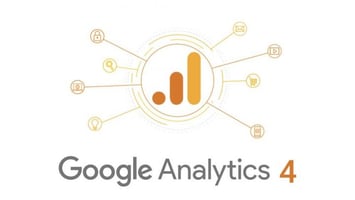Keywordless Campaigns Aren’t Innovation — They’re Obfuscation
Watch Google's Marketing Live 2025:
Yes, We Need to Work With Google—But Let’s Stop Pretending These Tools Are Built for Us
Google Marketing Live 2025 introduced a suite of innovations—AI Max, Performance Max (PMax), keywordless campaigns, Demand Gen—but let’s be clear: these tools are not built to grow your business. They’re built to grow Google’s bottom line.
With AI automation rising and transparency falling, marketers are losing the one thing that truly drives performance: control.
We can’t keep labeling every Google Ads feature “innovative” when it often functions as an abstraction. Tools like AI Max for Search and Demand Gen promise scale and efficiency. However, they also erode visibility, strip out nuance, and override strategy with system-driven assumptions.
We're told to “trust the system.” But what happens when that system benefits more from your uncertainty than your success?
The Illusion of Intent in Keywordless Campaigns
Keywordless advertising claims to map user intent better than any human marketer. But most conversions still come from brand-adjacent keywords—the precise, contextual moments that drive real return on ad spend (ROAS).
When campaigns are run on Google Ads’ smart automation without visibility into actual queries or keyword-level data, performance is often propped up by branded search traffic we didn’t need help acquiring. YouTube, Display, and Demand Gen might look effective on paper, but isolate them from branded touchpoints, and ROI collapses.
This blending of intent obfuscates the truth, making low-performing media appear successful by association.
Why Lack of Negative Keyword Control Is a Real Threat
Without access to search term reports or negative keyword matching, marketers are flying blind. AI in advertising is only as strong as the data we feed it—and if Google restricts our ability to refine its understanding, we’re not training the model. We’re surrendering to it.
This is especially problematic for small-budget advertisers who need to be precise. Imagine a brand that sells rugged outdoor workwear for women. A Google Ads campaign optimized for “women’s workwear” might instead promote dress slacks or office attire—a completely different audience, intent, and product fit.
Without negative keyword filtering or match-type control, budgets are spent on mismatches that don’t convert—and worse, they erode trust in Google ads altogether.
Conversion Delays Make Optimization Impossible
Smart bidding requires smart data. But Google's conversion data often lags by 7 to 18 days, particularly for actions like local store visits. That makes last week’s report outdated and misleading.
Marketers are forced to make real-time optimizations based on incomplete data. And when those conversions finally appear, they’re retroactively attributed—but the campaign engine doesn’t auto-correct for them. Budget decisions and strategy shifts have already happened.
Heading into high-demand seasons like the holidays, this latency could cost brands significantly—leaving them unprepared to scale spend when demand surges.
This isn’t agility. It’s post-mortem marketing.
Tag Gateway: Will It Fix the Lag or Just Hide It Better?
Google’s new Tag Gateway and push for first-party data are being sold as solutions. Better tracking. Faster signals. Clearer segmentation.
But here’s the real question: Will it reduce latency? Or will it simply make the models look smarter without actually solving for timing, clarity, or advertiser control?
Even with enhanced conversions and a cleaner data layer, if marketers still face attribution delays and shifting metrics, all the data plumbing in the world won’t matter.
Marketers don’t need better-looking dashboards. We need campaign systems that move at the speed of business—and let us optimize with confidence, not conjecture.
AI in Google Ads Needs Guardrails, Google’s AI Is Powerful—But Not Self-Aware
We’re not anti-AI. We’re not even anti-Google.
We’re pro-accountability.
As marketers, we are stewards of our clients' budgets and strategic outcomes. That means we’ll test AI Max, PMax, and Demand Gen—but we won’t switch off our judgment.
Because when transparency fades, so does trust. When conversion tracking lags, so does performance. And when strategic inputs are removed, campaign results become theater.
AI automation is the future. But without transparency, control, and timely insight, it’s not progress. It’s just polished guessing.
So ask the hard questions. Push back. And never mistake a more intelligent algorithm for smarter marketing.
SEO Topics:
google marketing live 2025, AI Max, smart campaigns, keywordless campaigns, AI-powered advertising, automation in Google Ads, performance max, demand gen campaigns, search and PMax integration, google ad transparency, return on ad spend, conversion tracking, attribution challenges, first-party data, tag gateway, GA4, google analytics changes, privacy-friendly tracking, ad automation risks, negative keyword control, campaign optimization, smart bidding, AI-driven search, ad creative automation, campaign measurement, media mix modeling, marketer control vs automation, strategic ad budgeting



